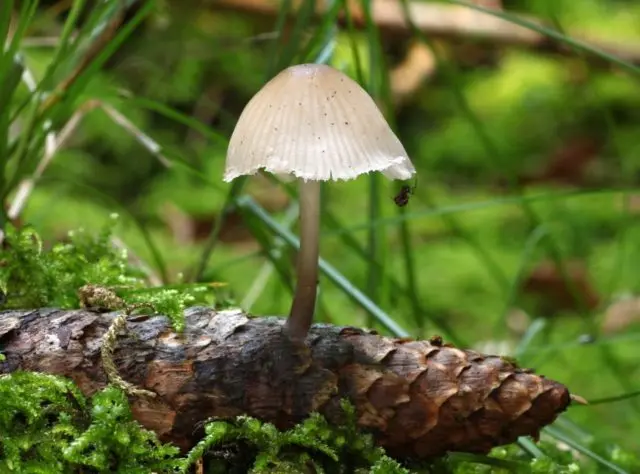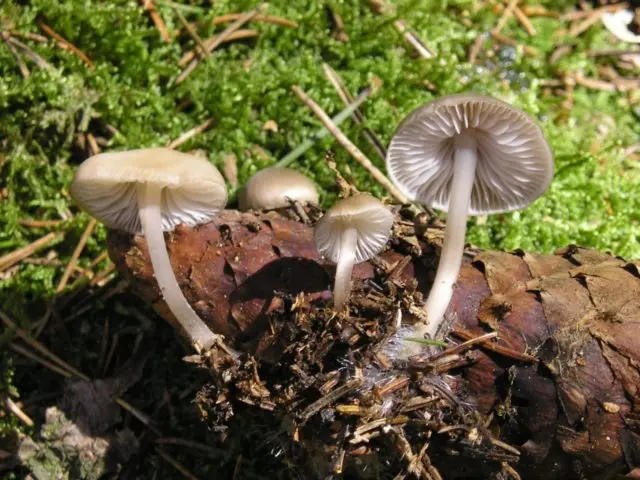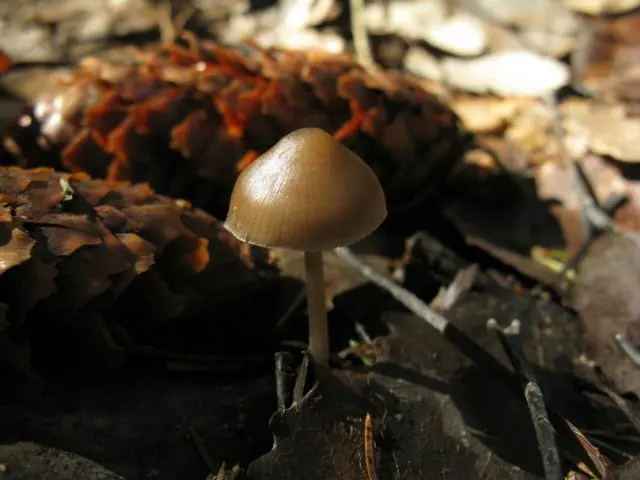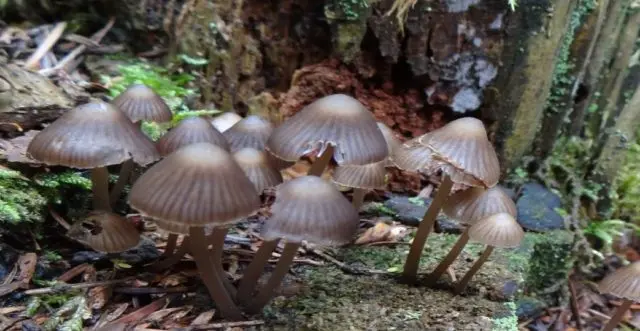Contents
It is not for nothing that Mycena Pine-Loving received such an interesting name. The fact is that this specimen grows exclusively on spruce cones. It is also called mycena sulphur, because of its characteristic murine color. It is considered one of the first spring mushrooms, since it begins its development in March. Represents the Mycena family, the genus Mycena.
What do mycenae bud-loving look like

At the initial stage of development in this species, the cap is hemispherical in shape, a little later it becomes almost prostrate with a clear tubercle in the center. It is rather small in size, since its diameter is no more than 3 cm. The skin of the cap is smooth, shiny in dry weather, and mucous in rainy weather. It has a brown-brown color, which, in the process of growing the fungus, fades to a gray or light brown hue. The plates are not frequent, wide, adherent with a tooth. At a young age they are white, then they become gray-brown in color.
Mycena cone-loving has a thin, hollow, cylindrical leg. It is characterized as silky and shiny, dark gray or brown. The width of the stem in diameter is about 2 mm, and the length varies from 2 to 4 cm, but most of it is hidden in the soil. At the base there may be growths of mycelium that look like a small cobweb.
The pulp of this species is brittle and thin, the plates are translucent along the edges. As a rule, it has a grayish color and exudes an unpleasant alkaline odor. Spores are amyloid, white, like spore powder.

Where do mycenae bud-loving grow
This variety actively begins its development from March to May, therefore it is one of the first spring hat mushrooms. It grows exclusively on spruce cones. Preference is given to coniferous litter. It is a fairly common species, but it is not always visible to the human eye, because it likes to hide in the ground. In this case, the cone-loving mycena looks squat.
Is it possible to eat bud-loving mycenae
There is no information on the edibility of this mushroom. There is an assumption that the cone-loving mycena is an inedible specimen due to its characteristic chemical smell of alkali.
In cooking, this species is of no interest both because of the unpleasant aroma and because of the small size of the fruiting bodies. The facts of the use of mycena bud are not registered, and there are no recipes for cooking from this ingredient.
How to distinguish

It is worth noting that many small mushrooms resemble mycena cone-loving, which, as a rule, are also inedible. So, a striking example is alkaline mycena. It has a strong and unpleasant smell, reminiscent of ammonia. However, it is quite simple to distinguish the species under consideration from the twin, since only mycena cone-loving is found on spruce cones.

Conclusion
Mycena cone-loving is a small mushroom of brown shades that grows directly on spruce cones, which can be completely submerged underground or protrude above the surface. In general, this specimen does not carry any nutritional value, and therefore is of no interest. Despite the fact that this species is quite common and often found in various regions, in Moscow, the cone-loving mycena is endangered. That is why this mushroom is listed in the Red Book in the capital, and measures have been taken to preserve the species.









